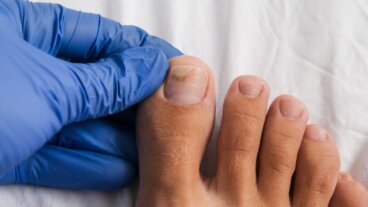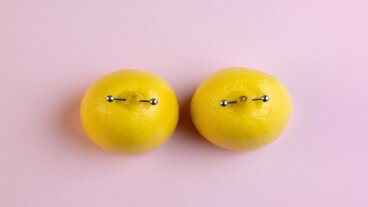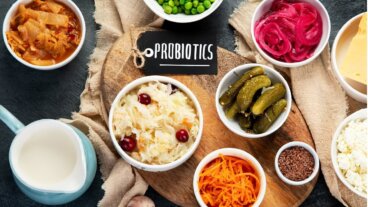Natural Home Remedies to Treat Hives
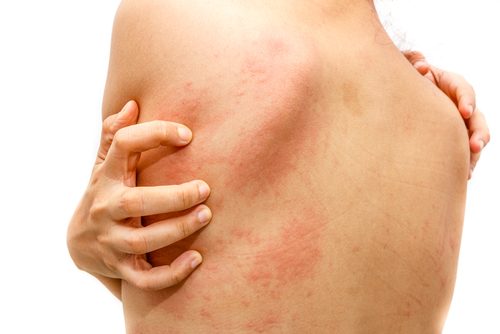

Reviewed and approved by the doctor Karla Henríquez
Your skin has various ways of reacting to external agents. In other words, it reacts when it thinks it’s under attack or in danger. Hives are one of these responses.
They can appear in one place or expand to different areas. Besides itching, another symptom is skin redness. In this article, we’re going to show you some home remedies to treat hives. Keep reading!
What are hives and what causes them?
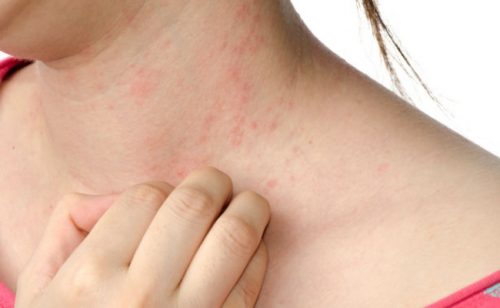
This skin reaction called hives can be caused by allergic reactions to certain substances. It can also be caused by contact with toxic or irritating substances. Many people suffer from it when they touch poison ivy or poison sumac, for example.
Other triggers that may cause hives are:
- Bug bites.
- Swimming in cold water.
- Exposure to the sun in the middle of the day.
- Taking a steam bath.
- Climate changes (being in a hot area and then going somewhere cold and vice versa).
Some people have this reaction when they eat certain kinds of foods (especially fish, shellfish, and nuts). In addition, some people also get hives when they take certain medications (such as penicillin).
On top of all that, some people even have emotional skin reactions due to stress, depression, or anxiety.
You should also read: How to Deal With Irritability, Anxiety and Depression
Common symptoms
The symptoms that you need to keep in mind when it comes to determining that you have hives are:
- Bumpy or raised skin.
- Swelling.
- Burning or tingling.
- Itching.
- Skin reddening.
Home remedies to treat hives
The symptoms of hives usually disappear by themselves. It can take a few hours or a few days. But during that time, you’ll have to put up with the uncomfortable symptoms.
The good news is that some home remedies help treat hives, mostly to reduce the itching. Pay attention to the following:
Onion
Thanks to its antiseptic and anti-inflammatory properties, onion is great for treating hives. Although it may burn a little at first, then you’ll be thankful for the relief.
- All you have to do is cut the onion into rings and apply them to the affected areas.
- Hold them in place with a bandage and let it work for at least half an hour. If the area is very large, we recommend that your rub half an onion on it and don’t rinse it off.
Cold compresses
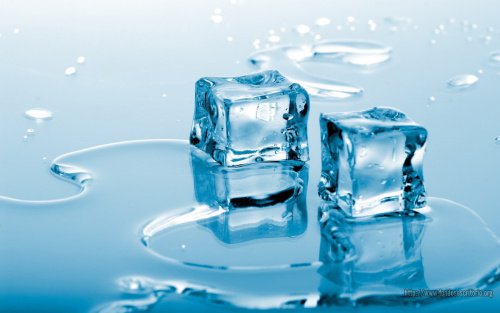
When your skin goes intensely red and starts to itch unbearably, a good way to relieve your symptoms is to apply cold water or ice cubes. This reduces the size of your blood vessels and blocks the release of histamine (which causes the irritation and itching).
- Remember not to put ice cubes directly on your skin or you’ll “freeze it” or burn yourself.
- If you want to, you can take a cold shower or even a bath if the hives have spread a lot.
Baking soda
For this remedy, you should use lukewarm water because it’s the easiest to dissolve baking soda in. However, you should be careful, as this option may worsen the irritation. It’s best to consult your doctor first.
- Fill the bathtub and add a couple of tablespoons of this indispensable product.
- Submerge the affected body part (or your whole body if you want). Then, let it soak for 20 minutes.
- Dry yourself off carefully. Use smooth strokes so you don’t irritate your skin even more.
Apple cider vinegar
Due to its properties, this widely-used condiment rapidly reduces inflammation and itching. In addition, it helps restore your skin’s overall health.
- If the hives haven’t spread too much, you can soak a cotton cloth in the vinegar and apply it like a compress.
- If the irritated area is larger, it’s better to soak in a tub with cold water and vinegar for at least 20 minutes.
Chamomile
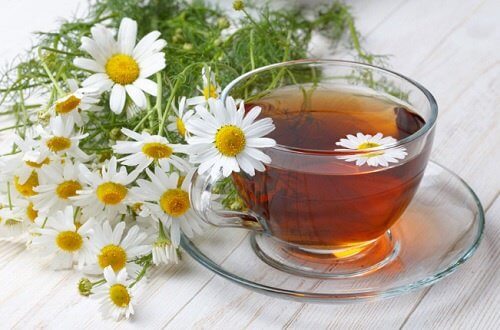
In this case, you’re going to reap the benefits of this tea internally. If you don’t have chamomile, you can use valerian root or linden (other calming herbs) as home remedies to treat hives. This is a great recipe if you have a breakout related to nervousness, stress, anxiety, etc.
Ingredients
- 2 tablespoons of chamomile flowers (20 g)
- 1 cup of water (250 ml)
- 1 tablespoon of honey (25 g)
Preparation
- Add the chamomile to the water in a pot. Bring it to a boil.
- Let it boil for five minutes and then remove it from the heat.
- Cover it and let it steep for another five minutes.
- Cool it and sweeten it with honey. Drink before it cools completely.
- Drink up to three cups per day.
Oat flour
Oat flour has anti-inflammatory properties and reduces the symptoms of hives almost immediately. In addition, it relieves the itching and helps the skin heal.
Ingredients
- 1 cup of baking soda (200 g)
- 2 cups of oat flour (250 g)
Preparation
- Mix the baking soda with the oat flour.
- Fill your bathtub with lukewarm water and add the ingredients.
- Mix until they dissolve.
- Soak in the tub for at least 15 minutes.
Another option is to apply the oat flour directly on the affected area. If you don’t have oat flour, you can use corn starch or talcum powder.
Visit this article: Four Oatmeal Breakfast Ideas to Speed Up Metabolism
Aloe vera
Of course, we couldn’t leave out this great home remedy. After all, it works on many of the worst skin problems. Aloe vera reduces the symptoms of hives, encourages healing, and prevents scratching (that can damage your skin and cause infections) and redness.
- Simply cut an aloe vera leaf lengthwise.
- Then, extract all of the gel inside. You can apply this to the affected area.
- Leave it to dry.
All cited sources were thoroughly reviewed by our team to ensure their quality, reliability, currency, and validity. The bibliography of this article was considered reliable and of academic or scientific accuracy.
- Bansal, C. J., & Bansal, A. S. (2019). Stress, pseudoallergens, autoimmunity, infection and inflammation in chronic spontaneous urticaria. Allergy, Asthma, and Clinical Immunology: Official Journal of the Canadian Society of Allergy and Clinical Immunology, 15, 56. https://pmc.ncbi.nlm.nih.gov/articles/PMC6737621/
- Bharat, I., Sehgal, C., & Ranjan, R. (2023). Assessment of cases of Pruritic urticarial papules and plaques of pregnancy (PUPPP). International Journal of Life Sciences Biotechnology and Pharma Research, 12(2), 1387-1390. https://www.ijlbpr.com/uploadfiles/248vol12issue2pp1387-1390.20230522061749.pdf
- Dabija, D., Tadi, P., & Danosos, G. N. (2023). Chronic Urticaria. StatPearls. https://www.ncbi.nlm.nih.gov/books/NBK555910/
- Detholia, K. K., Jadeja, M. B., Varia, U. R., Katariya, H. B., Panchal, V. D., Panchal, V. B., Panchal, V. B., Prajapati, J. K., Chhipa, D. B., & Pandit, D. D. (2024). Innovative And Alternative Approaches To Urticaria Management. 2(8), 2427-2436. https://www.ijpsjournal.com/article/Innovative+And+Alternative+Approaches+To+Urticaria+Management
- Dugué, C., Baiyasi, M., Jackson, S., Tolliver, S., & Daveluy, S. (2024). Baking Soda and the Skin: A Review of Baking Soda in Dermatology. Journal of Integrative Dermatology. https://www.jintegrativederm.org/article/122501-baking-soda-and-the-skin-a-review-of-baking-soda-in-dermatology
- Edwards, T., & Palmer, V. (2024). Theoretical Complementary and Alternative Therapies for Papular Urticaria: A Review of Potential Treatments based on Shared Pathophysiology. Journal of Integrative Dermatology. https://www.jintegrativederm.org/article/121474-theoretical-complementary-and-alternative-therapies-for-papular-urticaria-a-review-of-potential-treatments-based-on-shared-pathophysiology
- Elsaie, L. T., El Mohsen, A. M., Ibrahim, I. M., Mohey-Eddin, M. H., & Elsaie, M. L. (2016). Effectiveness of topical peppermint oil on symptomatic treatment of chronic pruritus. Clinical, Cosmetic and Investigational Dermatology, 9, 333-338. https://pmc.ncbi.nlm.nih.gov/articles/PMC5066694/
- Gaurav, V., Bhoi, A. K., & Mehta, N. Home Remedies in Dermatology. Indian Dermatology Online Journal, 14(6), 864-870. https://journals.lww.com/idoj/fulltext/2023/14060/home_remedies_in_dermatology.18.aspx
- Gonçalves, S., Fernandes, L., Caramelo, A., Martins, M., Rodrigues, T., & Matos, R. S. (2024). Soothing the Itch: The Role of Medicinal Plants in Alleviating Pruritus in Palliative Care. Plants, 13(24), 1-54. https://www.mdpi.com/2223-7747/13/24/3515
- Ludmann, P. (18 de diciembre de 2024). 10 ways to get relief from chronic hives. Academia Estadounidense de Dermatología. Consultado el 29 de enero de 2025. https://www.aad.org/public/diseases/a-z/hives-chronic-relief
- Maurya, S. K., & Seth, A. N. K. I. T. (2014). Potential medicinal plants and traditional ayurvedic approach towards urticaria, An allergic skin disorder. International Journal of Pharmacy and Pharmaceutical Sciences, 6(5), 172-177. https://www.researchgate.net/publication/282877302_Potential_medicinal_plants_and_trditional_ayaurvedic_approach_towards_Urticaria_an_allergic_skin_disorder
- Reynertson, K. A., Garay, M., Nebus, J., Chon, S., Kaur, S., Mahmood, K., Kizoulis, M., & Southall, M. D. (2015). Anti-inflammatory activities of colloidal oatmeal (Avena sativa) contribute to the effectiveness of oats in treatment of itch associated with dry, irritated skin. Journal of Drugs in Dermatology: JDD, 14(1), 43-48. https://pubmed.ncbi.nlm.nih.gov/25607907/
- Ruenger, T. M. (Enero de 2023). Ronchas (urticaria). Manual MSD. https://www.msdmanuals.com/es/hogar/trastornos-de-la-piel/prurito-y-dermatitis/ronchas-urticaria?ruleredirectid=750
- Shah, K., Raole, V., Parikh, N., Engineer, S., Bhrambhatt, R., & Chauhan, B. (2018). A review on herbal approach towards urticatia an allergic skin disorder. World Journal Of Pharmaceutical Research, 7(7), 1997-2008. https://www.researchgate.net/publication/324223209_A_REVIEW_ON_HERBAL_APPROACH_TOWARDS_URTICARIA_AN_ALLERGIC_SKIN_DISORDER
- Son, J. H., Chung, B. Y., Kim, H. O., & Park, C. W. (2018). A Histamine-Free Diet Is Helpful for Treatment of Adult Patients with Chronic Spontaneous Urticaria. Annals of Dermatology, 30(2), 164-172. https://synapse.koreamed.org/articles/1095380
- Talamantes, C. S., Ninet, V. Z., & Martínez, R. A. (2017). Aproximación a la clínica: diagnóstico y manejo de la urticaria. Enfermería Dermatológica, 11(32), 10-23. https://dialnet.unirioja.es/servlet/articulo?codigo=6327407
This text is provided for informational purposes only and does not replace consultation with a professional. If in doubt, consult your specialist.

